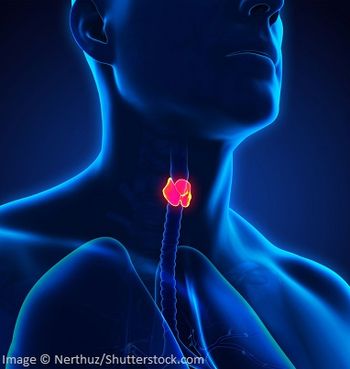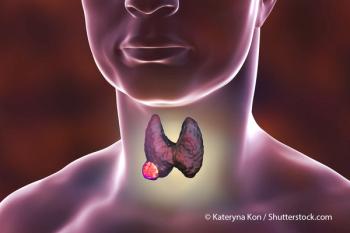
Next-Gen Sequencing May Advance Tx of Patients With Poorly Differentiated Thyroid Cancer
Next-generation sequencing may prove to be a useful tool in the identification of co-mutations associated with resistance, an MD Anderson study suggests.
The MAPK pathway is the predominant target for therapy in advanced thyroid carcinomas. However, adding next-generation sequencing (NGS) may allow for better identification of co-mutations associated with treatment resistance (such as PI3K/AKT), according to researchers at the University of Texas MD Anderson Cancer Center. Hui Chen, MD, PhD, and colleagues
Chen and colleagues analyzed the molecular profiles of 216 patients with advanced thyroid carcinoma using NGS (Ion Torrent Personal Genome Machine). All patients were evaluated between April 2012 and February 2014. Substitutions and small indels in 46 of 50 cancer-related genes (Ampliseq Cancer Hotspot panel) were assessed for their association with tumor diagnosis and clinical outcomes.
NGS is a high-throughput methodology that allows for rapid sequencing of base pairs in DNA or RNA samples. It can be used for gene expression profiling, chromosome counting, detection of epigenetic changes, and molecular analysis. Chen et al theorize that extending mutational profiling of advanced thyroid cancers may help better guide the use of targeted therapies and allow for more personalized medicine.
The researchers found that mutations occurred in 154 patients (71%) with advanced thyroid carcinomas. The predominately targetable pathway was MAPK, which occurred in 146 mutations (68%). The researchers found 8 mutations (6 of which were co-mutations) associated with the PI3K/AKT pathway. Among patients with papillary carcinomas, BRAF V600E mutation was noted in 94 of 139 mutations (68%). However, BRAF V600E mutations occurred in a much smaller proportion of poorly differentiated (10%) and anaplastic (25%) carcinomas. In patients with follicular carcinoma, NRAS mutations occurred in 5 of 12 incidences (40%), and in 12 of 39 PDTCs (31%).
The study showed that tumor suppressor mutations occurred in 16 cases (7%), predominantly in TP53 in Hurthle cell carcinoma (with TP53 alterations being the only mutation in 40% of cases). In anaplastic disease, there were mutations in 3 of 12 cases (25%), and poorly differentiated thyroid carcinoma in 4 of 39 (10%). The team conducted a Kaplan-Meier analysis and found that patients with PDTCs containing activating mutations benefitted from treatment with targeted agents. These patients experienced improved survival compared with similarly treated patients whose tumors did not have targetable mutation pathways (P = .02).
David J. Prelutsky, MD, an associate professor of clinical medicine at Washington University School of Medicine, St. Louis, said these findings are clinically relevant and should be further validated in larger studies. He believes that, if confirmed, these results could lead to a change in the standard of care. “The field is changing rapidly,” he told Cancer Network. “Using molecular technology can lead to more precise and more effective therapy.”
Newsletter
Stay up to date on recent advances in the multidisciplinary approach to cancer.

















































































